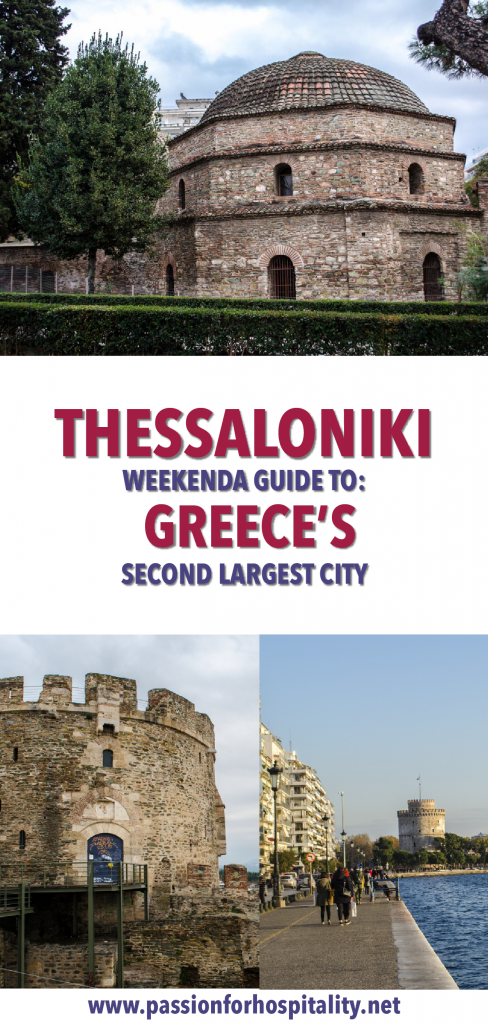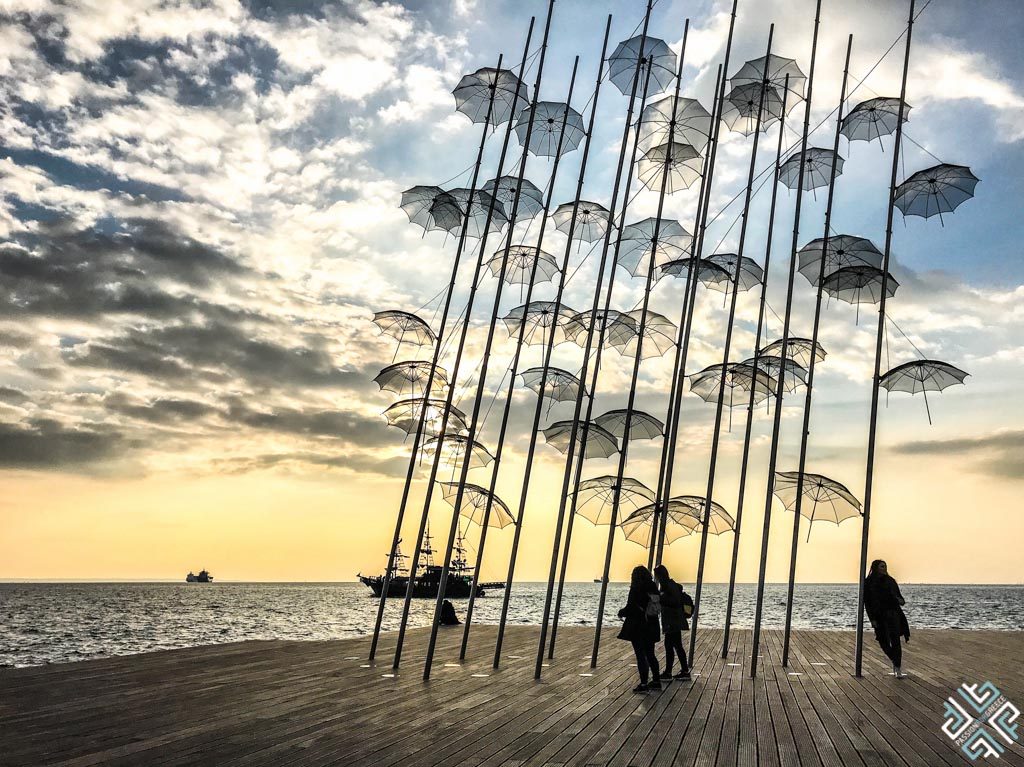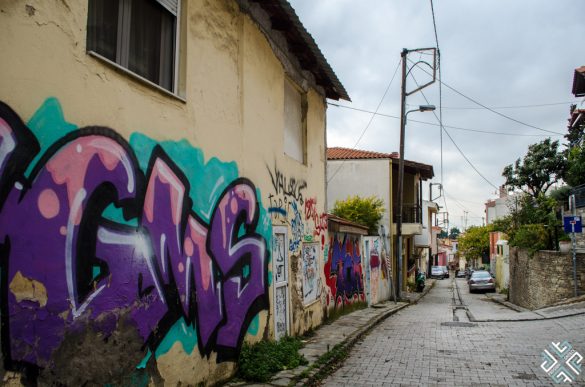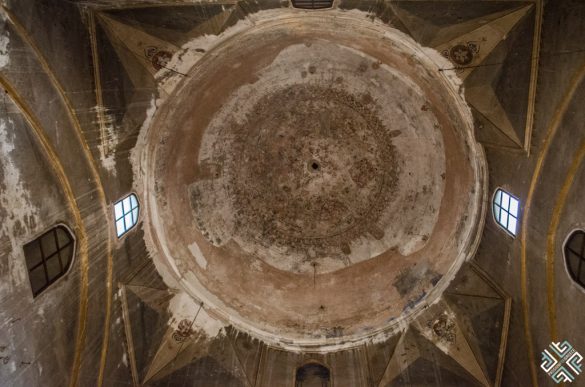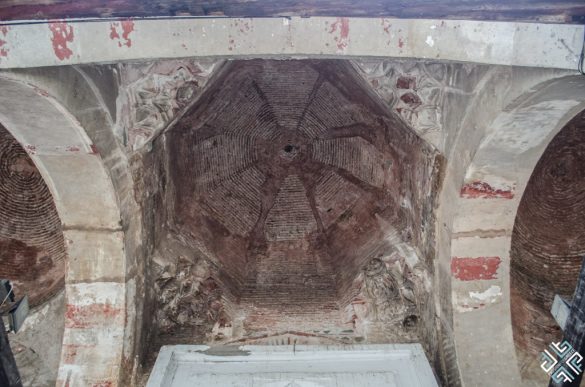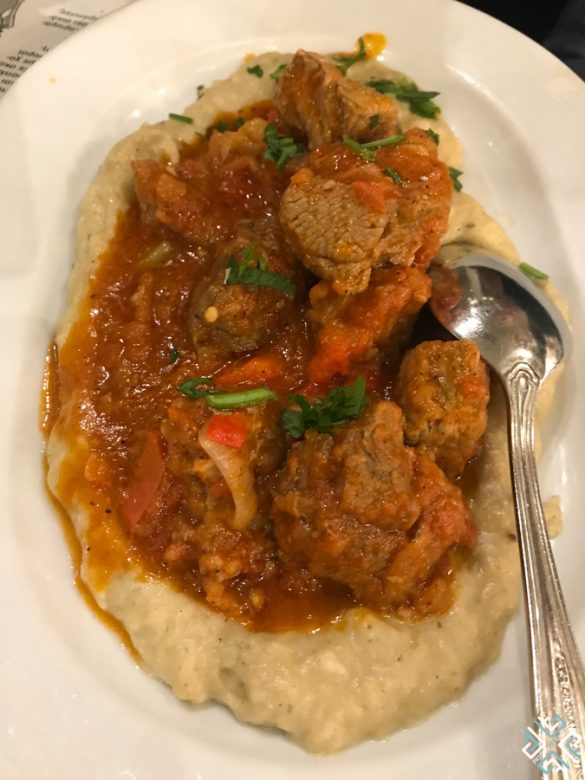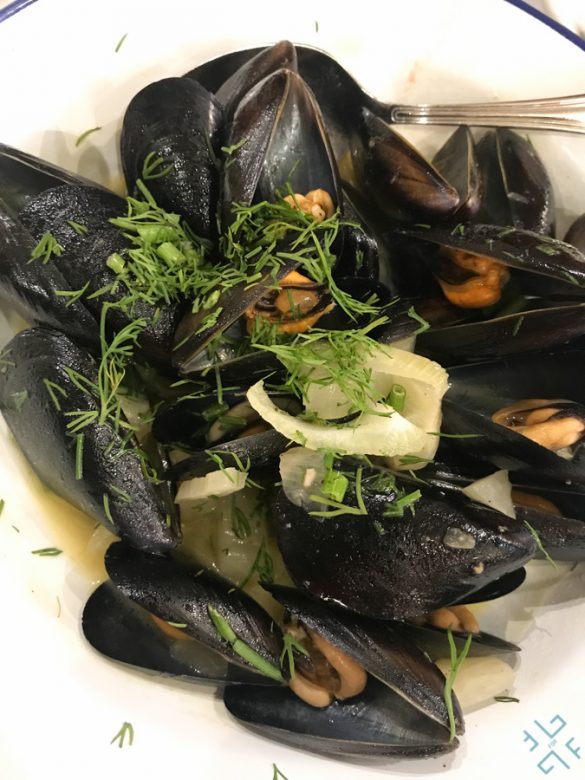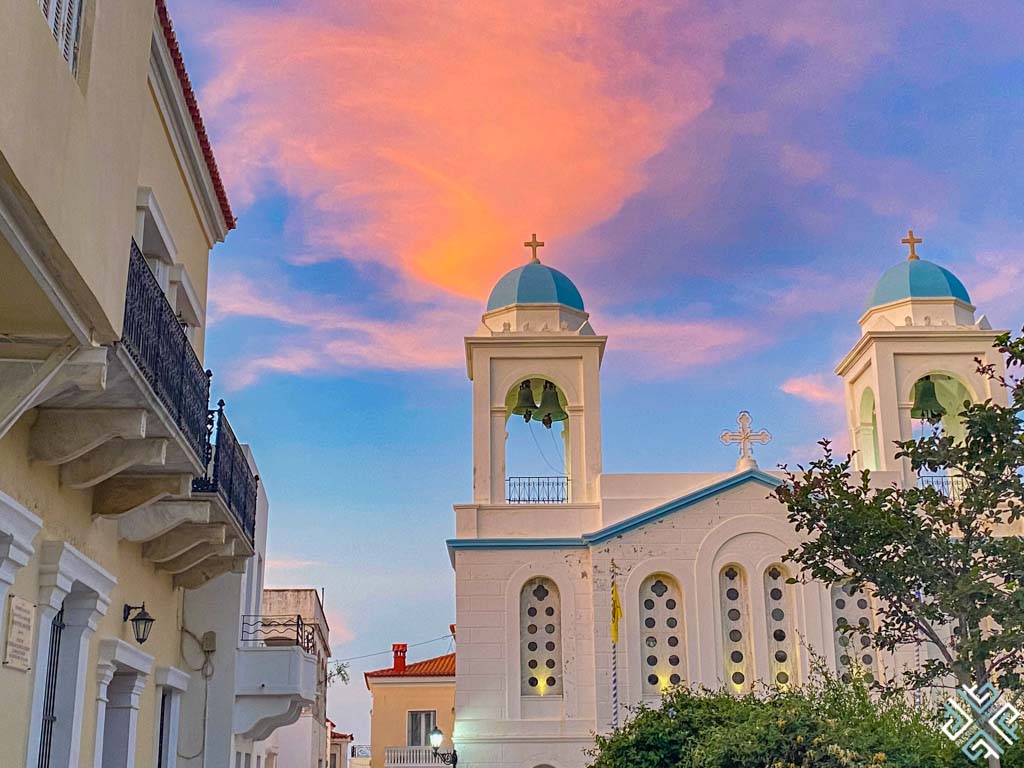This fabulous city is Greece’s second largest. Much smaller than Athens, far in the north, and out of the way of the usual tourist path, it has a low profile. This turns out to be absolutely key to Thessaloniki’s charm. You can take in the sights of this pleasingly compact city with ease, mostly on foot, then enjoy its relaxed rhythms like a local. Walking will also help you build up an appetite- Thessaloniki is famous all over Greece for its excellent cuisine.
Thessaloniki Weekend: A guide to Greece’s second largest city
What to Love about Thessaloniki:
An Impressive History
Thessaloniki has an impressive cosmopolitan pedigree, stretching back more than two millennia. This port city hit the map with a bang, built by Cassander in 315 BC. He named the city for his wife, Thessaloniki- whose name celebrates the Macedonian victory (“niki”!) over Thessaly. The Romans then took over and the city grew in prominence, eventually becoming one of the seats of the Roman tetrarch Galerius. Monuments from the grandeur of the Roman eras give the city elegance.
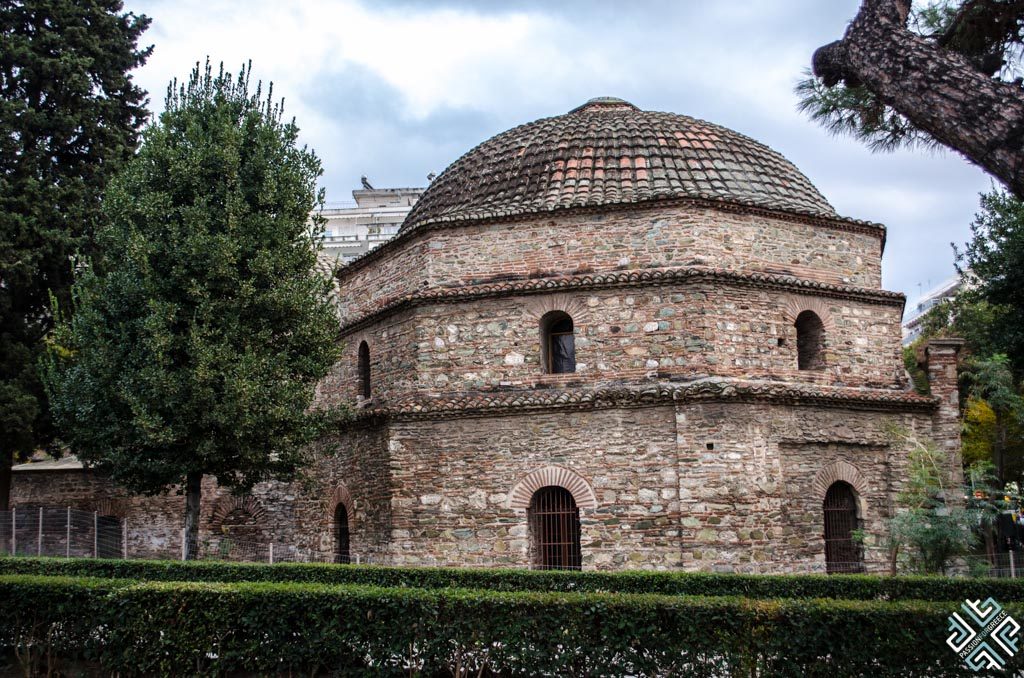
Then, this was the jewel of the Byzantine Empire, a significant port, and second only to Constantinople in importance. Everyone wanted Thessaloniki- Saracens, Venetians. Finally, the Ottomans seized the city in in the middle of the 15th century, and held it for almost five centuries. A haven for Sephardic Jews fleeing persecution in Spain and Italy, the city had a multicultural demographic. This influenced architecture, cuisine, and music. These diverse cultural influences are still deeply felt.
Architectural Bling:
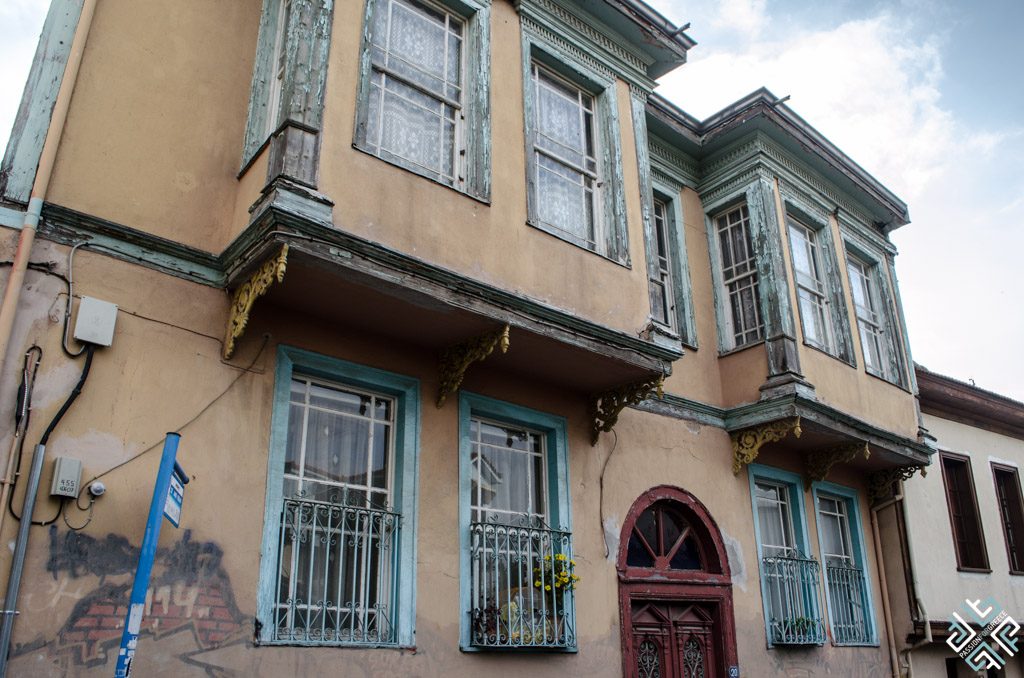
By the time of the Belle Epoque, parts of the city was steeped in wealth and culture. Unlike in restrained, neo-classical Athens of the late 18th and early 20th centuries, the wealthy of Thessaloniki built their grand mansions in the ‘ecclectic’ style of folkloric charm, Art Nouveau elegance, Gothic details, and onion domes. Every architectural fantasy was indulged.
Cosmopolitan Charm:
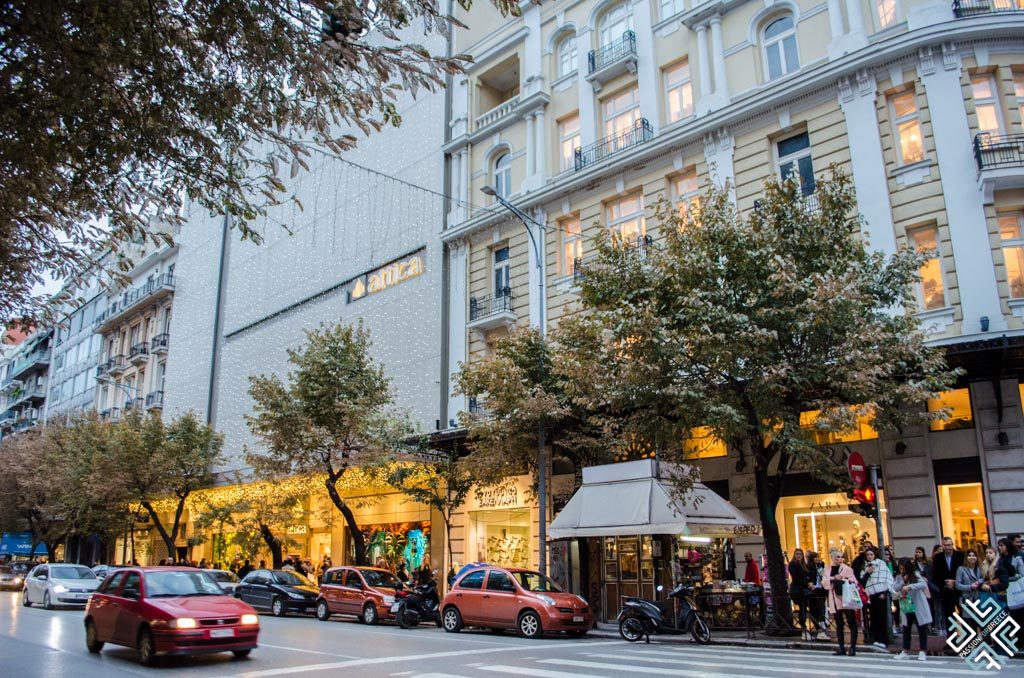
With such an impressive urban pedigree, the people of Thessaloniki have a quiet confidence. This unhurried, civilized city enjoys life. It is particularly famous for its well-dressed citizens, its cafes and ouzeries, and basically for enjoying life!
Check out the OTE Tower Rotating Experience with Light Meal experience
What to see in a perfect Thessaloniki weekend:
Seaside Promenade
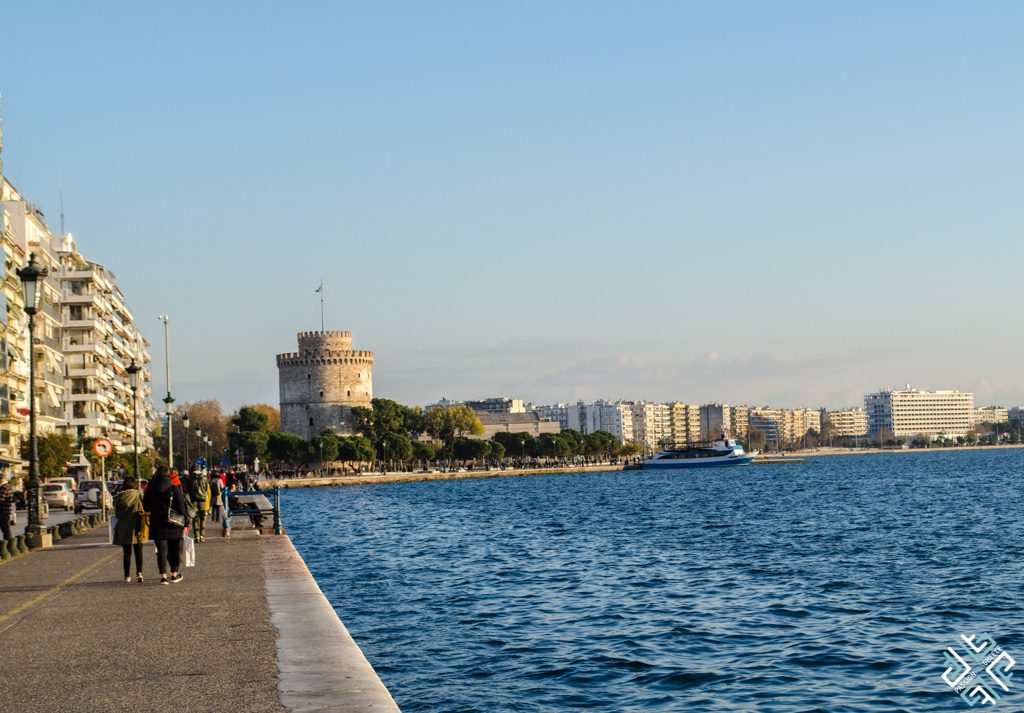
Thessaloniki has one of the most impressive urban coastlines in Europe and it really is a beauty. The city curves around the Thermaikos bay, and there is a long, beautiful promenade, stretching just under 5 km from the harbor in the West to the Concert Hall in the east, and then far, far beyond to the palace and the small fishing boat and pleasure boat arbors of Krini. Walking is the best way to see this fabulous city.
A Cultured Harbor
Start your walk at the harbor- going out on the pier gives you an incredible view of the waterfront buildings, the white tower, and in the near distance, glorious Mt. Olympus.
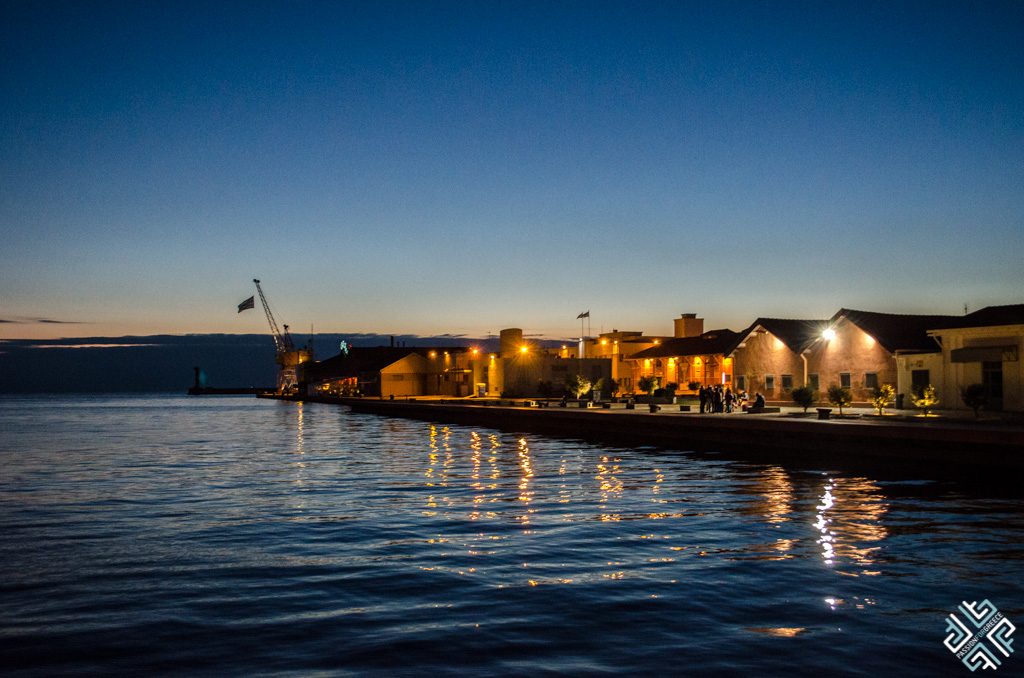
In the refurbished warehouses of the harbor are several museums- the Museum of Photography, the Thessaloniki Cinema Museum (the city is home to a significant International Film Festival each year), and the Center for Contemporary Art. The many benches and chaise lounges fill with students and sight-seers enjoying the sun.
The White Tower- Thessaloniki’s Main Landmark
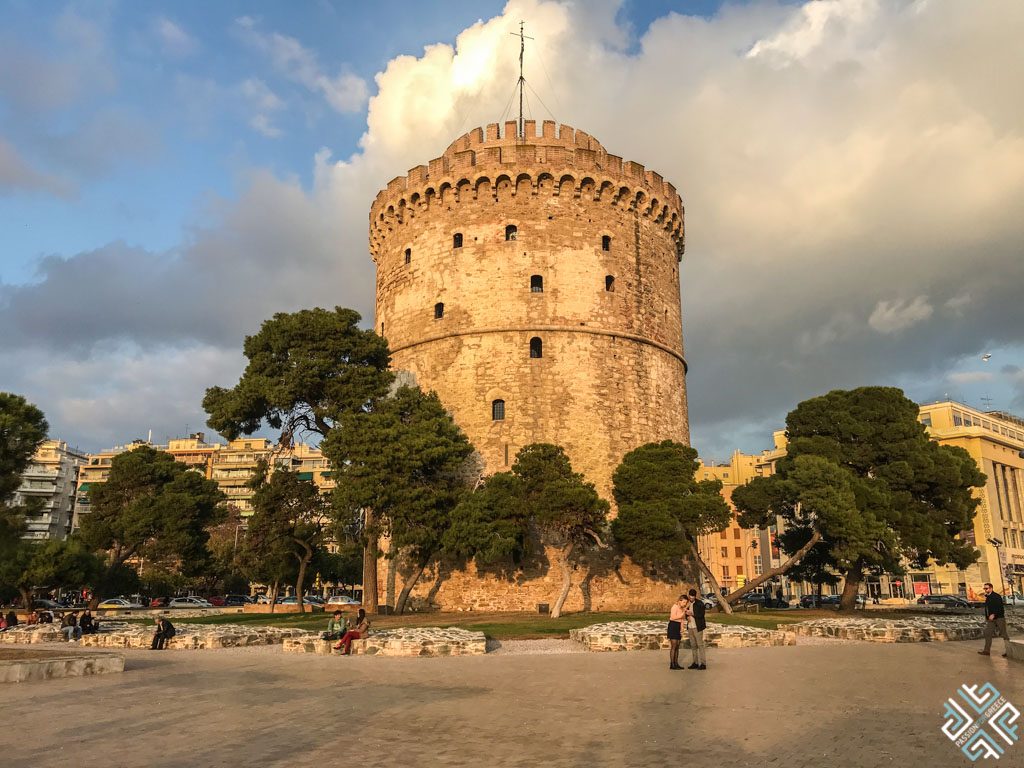
When Thessaloniki was liberated from the Ottomans and became part of modern Greece in 1912, there was some thought to tear down this Ottoman era tower. Now it is impossible to imagine the city without it. It is a symbol of the city, and inside is an atmospheric fascinating museum all about the complex history of the city. The exhibits are in Greek, but there are audio guides in several languages. There is an observation deck on the roof- great for photos and orientation.
Leoforos Nikis at Ethnikis Amynis
Tuesday – Sunday, 8:30 – 15:00
The Rotonda
This amazing monument is Thessaloniki’s oldest building, built by Roman tetrarch Galerius in the early 4th century AD. At 30 meters high, this tremendous unbroken domed space is about 2/3s in size of the Pantheon in Rome. The splendid mosaics have recently been restored. Go into the very center to enjoy the wonder of the acoustics.
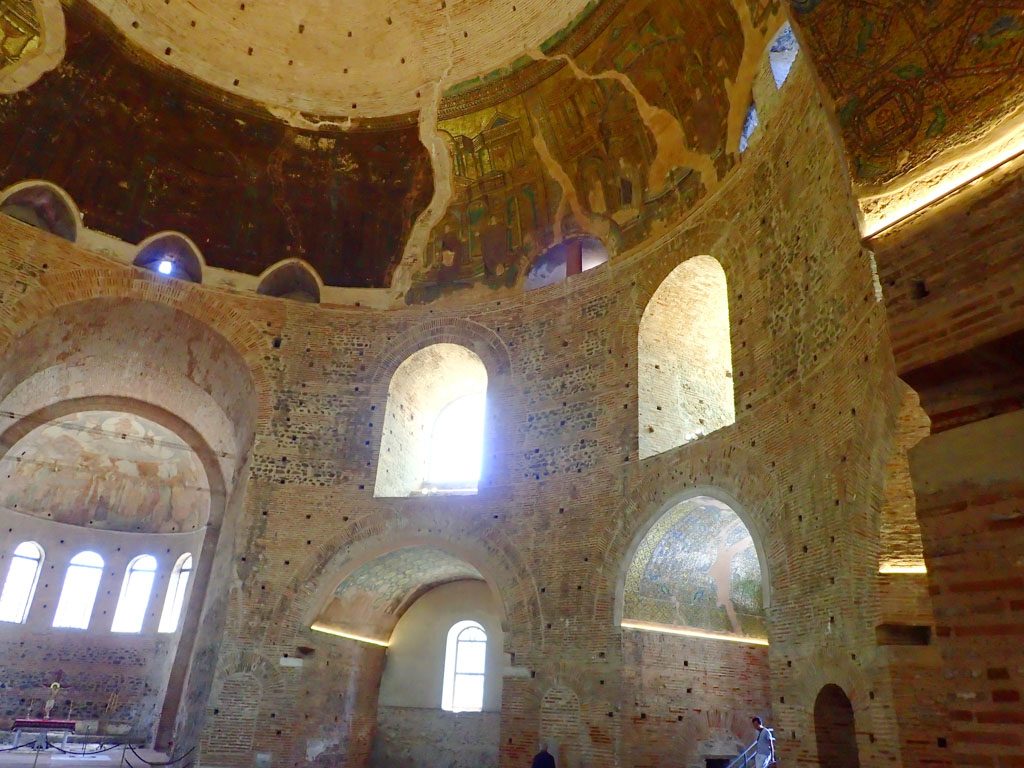
Shortly after it was built, Christianity began to spread throughout the Empire and this became the Church of St. George. It was the Mosque of Hortatz Effendi in the Ottoman Era. This is when it acquired the fountains outside, and the minaret, which is the only minaret to survive in Thessaloniki.
Plateia Agiou Georgiou
Tuesday – Sunday, 9:00 – 16:00
Kamara
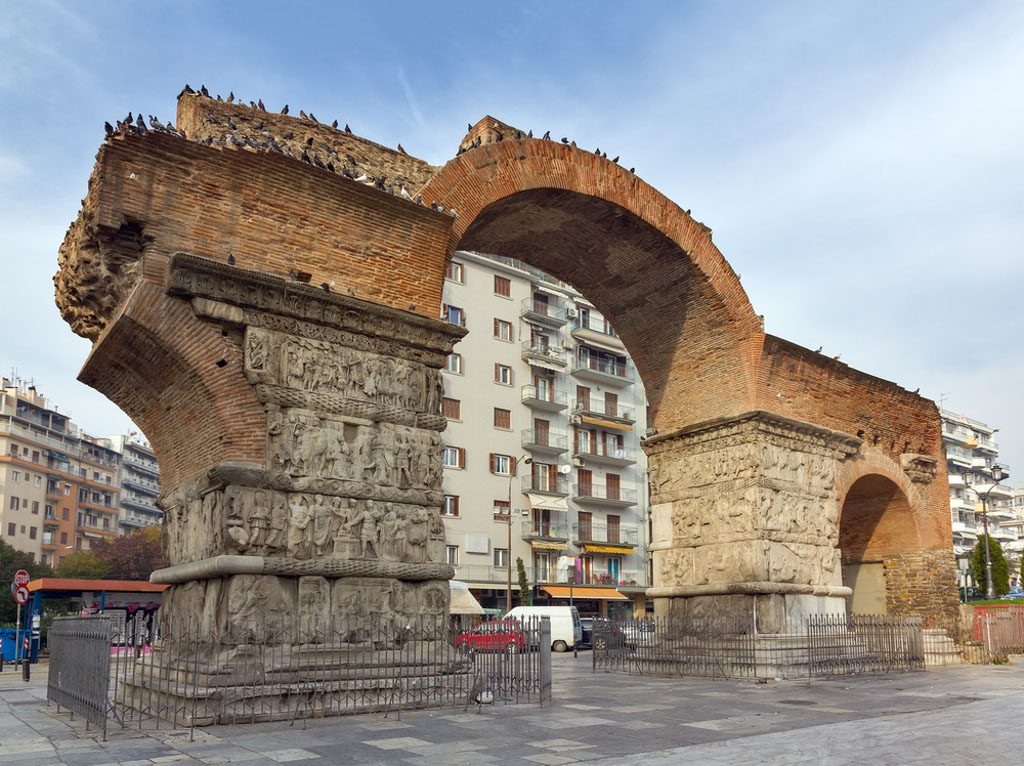
“Kamara” just means “arch” in Greek, but in Thessaloniki you mean this triumphal arch, celebrating a victory over the Persians. It was built as part of the Galerian complex and is just down from the Rotonda. It’s a very popular meeting point for students, as he university is right nearby.
Egnatia, across from the pedestrian street Dimitrios Gounari
Ano Poli- The Upper Town
The hillside below the Byzantine walls is the old part of the city and it is full of charm and significant sights.
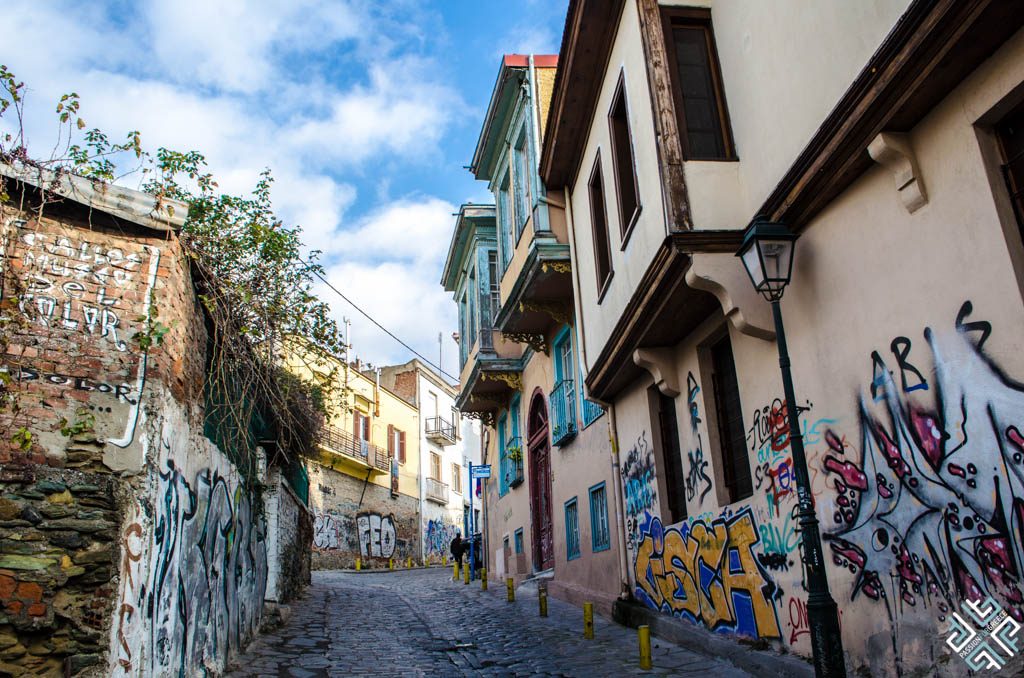
Traditional Ottoman style houses line cobblestone lanes, alleys and even staircases in this maze-like part of town. It is full of mouments and sights of interest.
The Trigonio Tower of the Castra
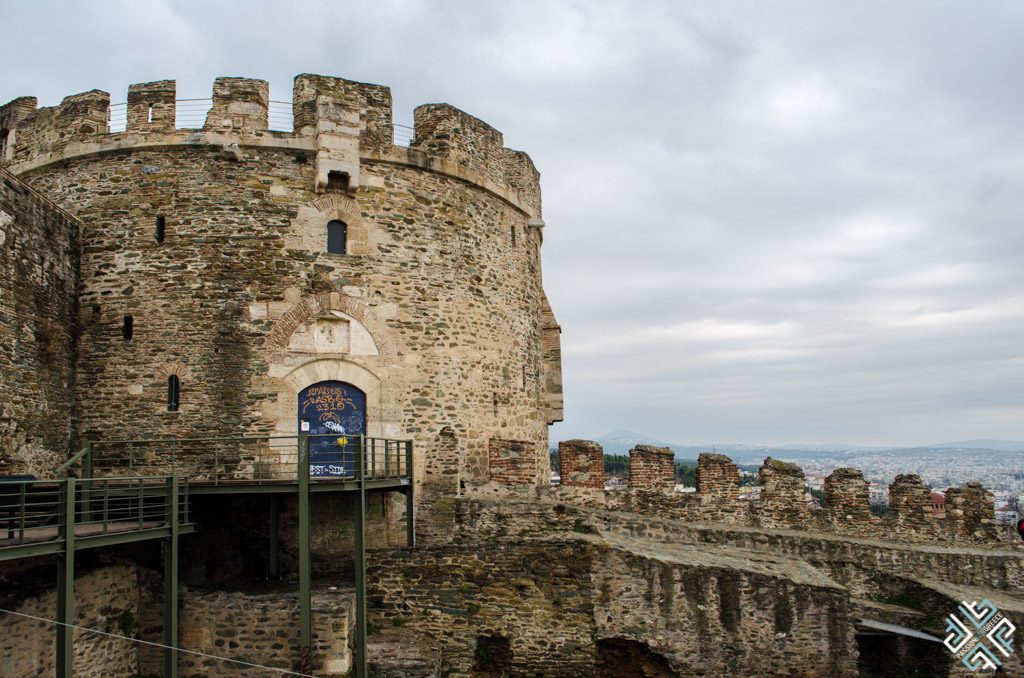
The Byzantine walls that crown the city glow at night. At sunset, locals and visitors hike, or take a taxi, up to the Trigonio Tower for the amazing views of the city, the bay, and majestic Mt. Olympus.
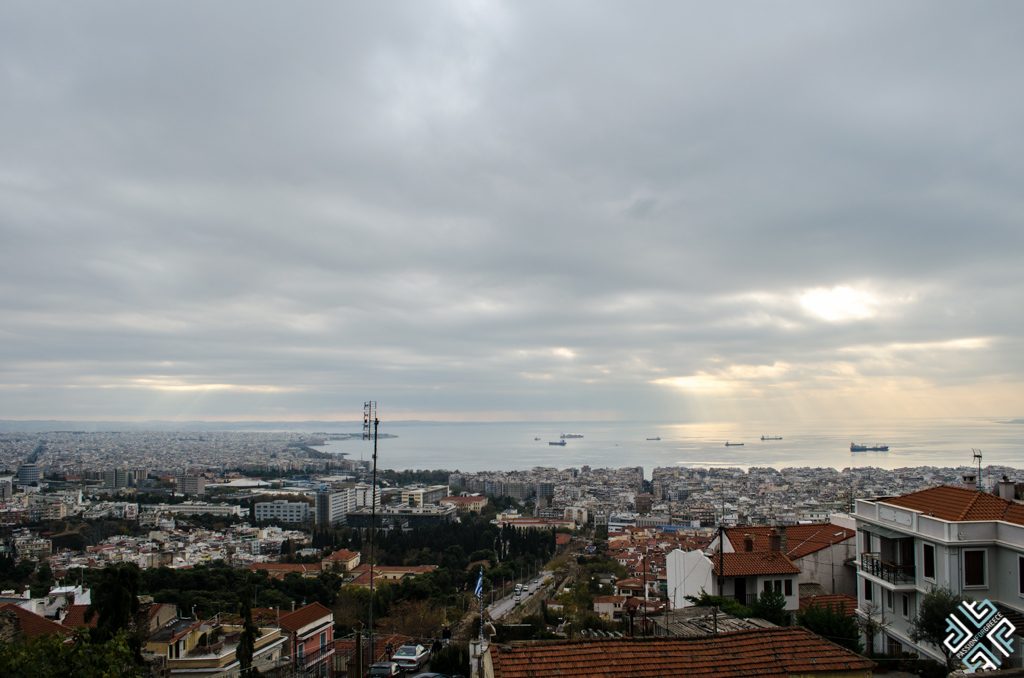
The Church of Osios David
Tiny and difficult to find, this is one of the oldest churches in Thessaloniki. And it is really worth seeking out. Inside is an absolutely incredible mosaic of the vision of Ezekiel.
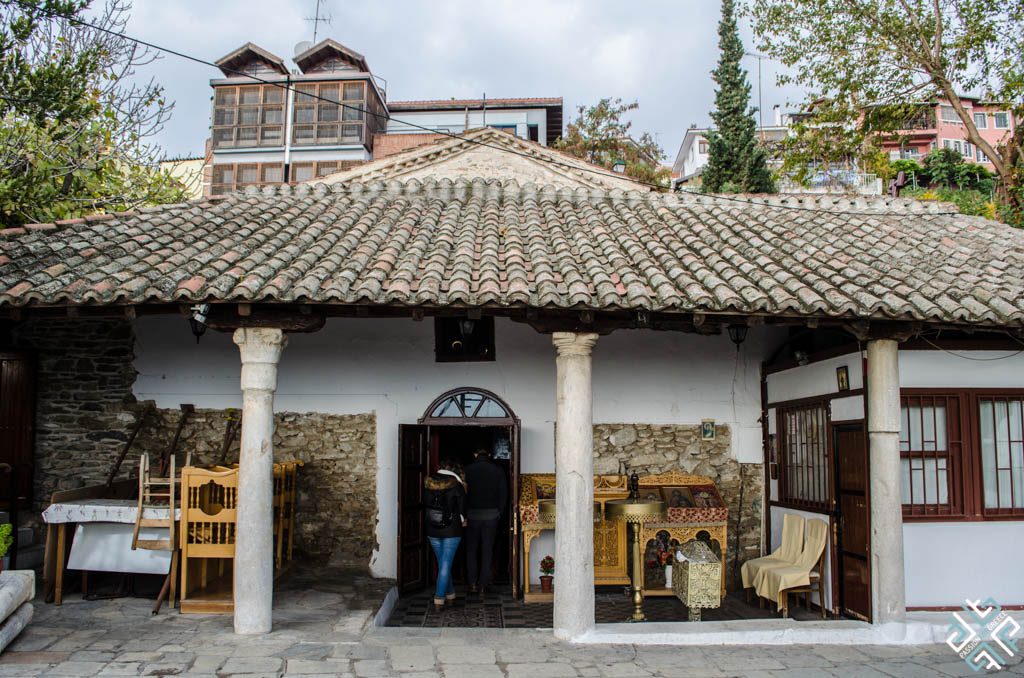
It is considered by UNESCO to be one of the masterpieces of early Christian Art. You will be amazed- it is truly a thrilling sight, full of emotion and beauty.
Epimenidou 17. Usually closes around 13:00
Tsinari
This particularly picturesque corner of Ano Poli takes its name from the Turksih word for plane tree. It looks like a tiny village, with charming cafes and ouzeries. You won’t believe you are just a few minute’s walk from the city center.
Loom for the Streets Alexandas Papadopoulou, Klious, and Akrita
Alaja Imaret
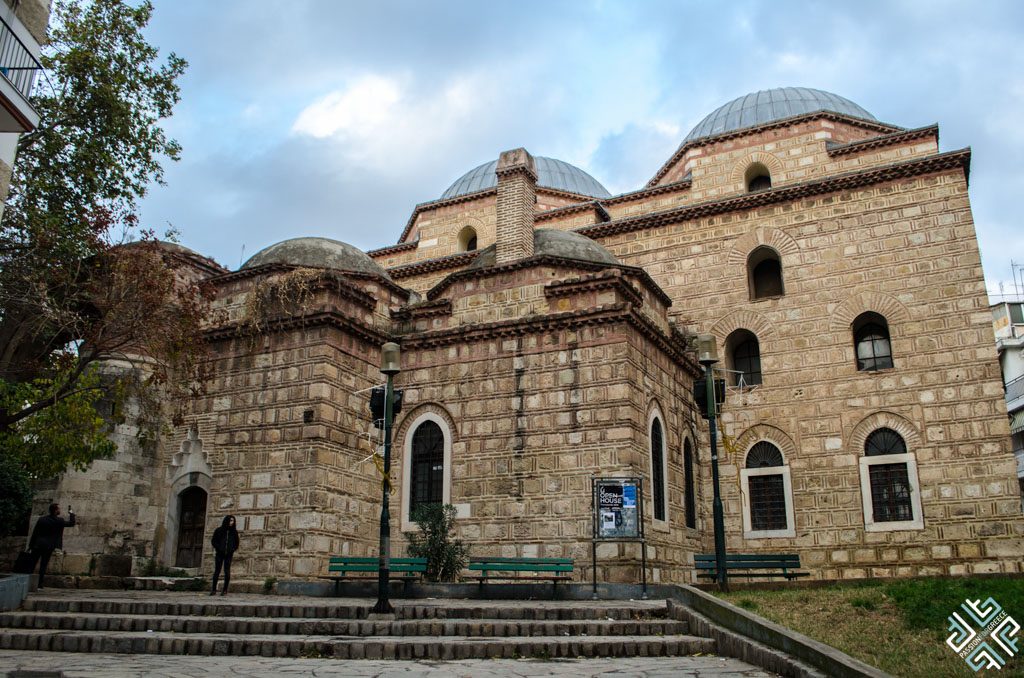
At the very lower edge of Ano Poli is tis splendid 15th century mosque. The name means “multi-colored house of charity” for the colorful minaret that once stood outside.
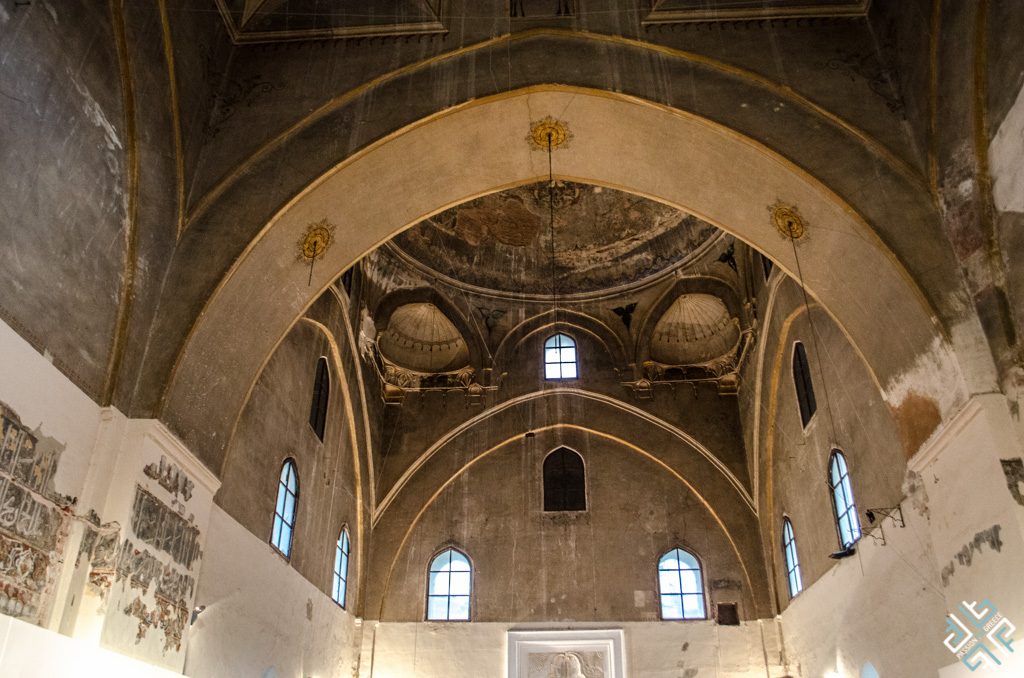
The ceiling paintings of the two very high domes are beautifully intact. The space is now used for exhibitions by the Municipal Art Gallery of Thessaloniki.
Kassandrou 91-93, Tusday – Saturday 11:00 – 18:00
The Center
Agios Dimitrios
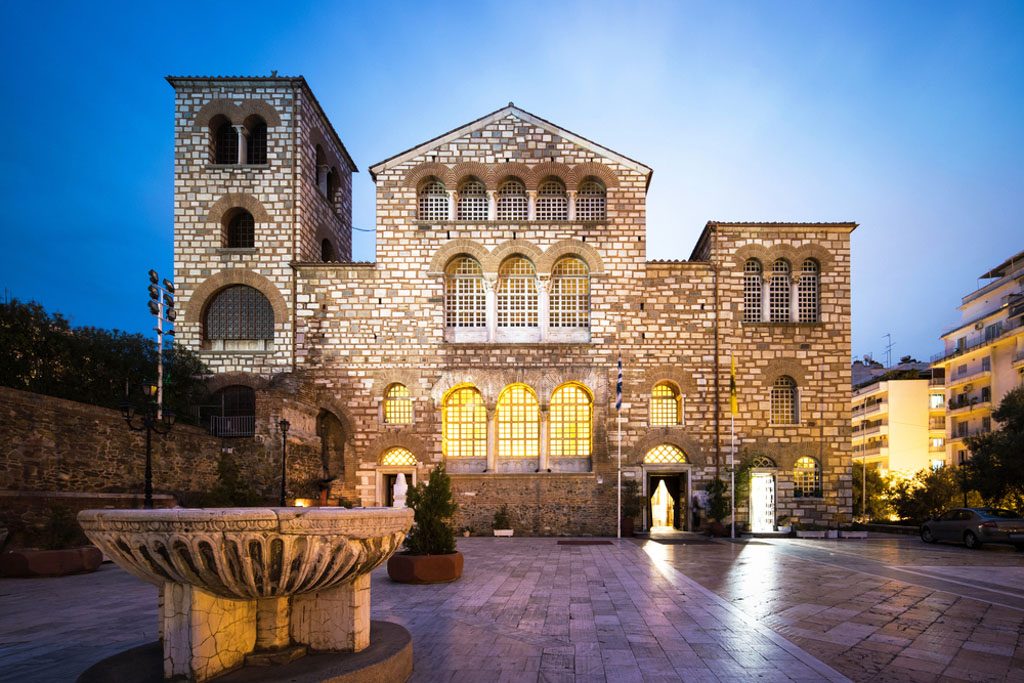
This brings us to the Historic Center of the city. Just below the Alaja Imaret is Agios Dimitrios- church of the Patron Saint of the city. Thessaloiki was liberated on his name day- October 26th, 1912- a huge holiday in the city. This church, a five-aisled basilica, has a wonderful crypt that serves now as a small and atmospheric museum.
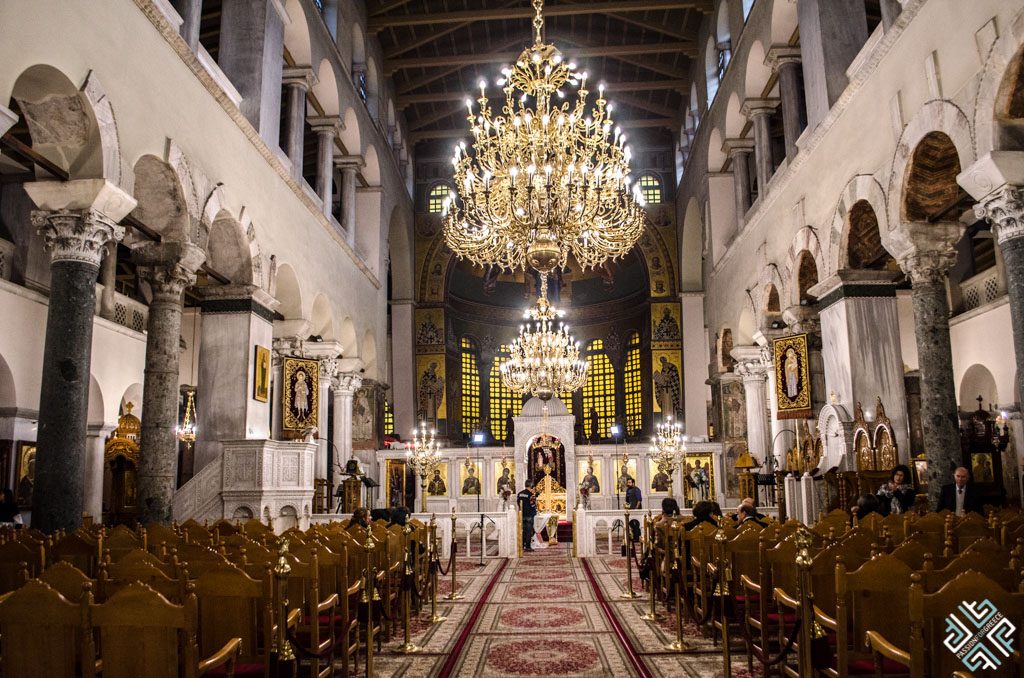
Aghiou Dimitriou, above the Roman Agora.
Church- Daily, 8:00 – 22:00 (this is an important pilgrimage site and has much longer hours than most churches)
Crypt-
Monday, Wednesday, Thursday: 8.00-14.30
Friday: 8.00-13.30 and 19.00-22.00 (Mass)
Saturday, Sunday: 7.30-14.30
Closed Tuesdays
The Roman Agora
This glorious Roman Forum was the hub of the city from the first century AD until the Galerian Complex was built in the early 4th C, and it continued to be active until the 6th century.
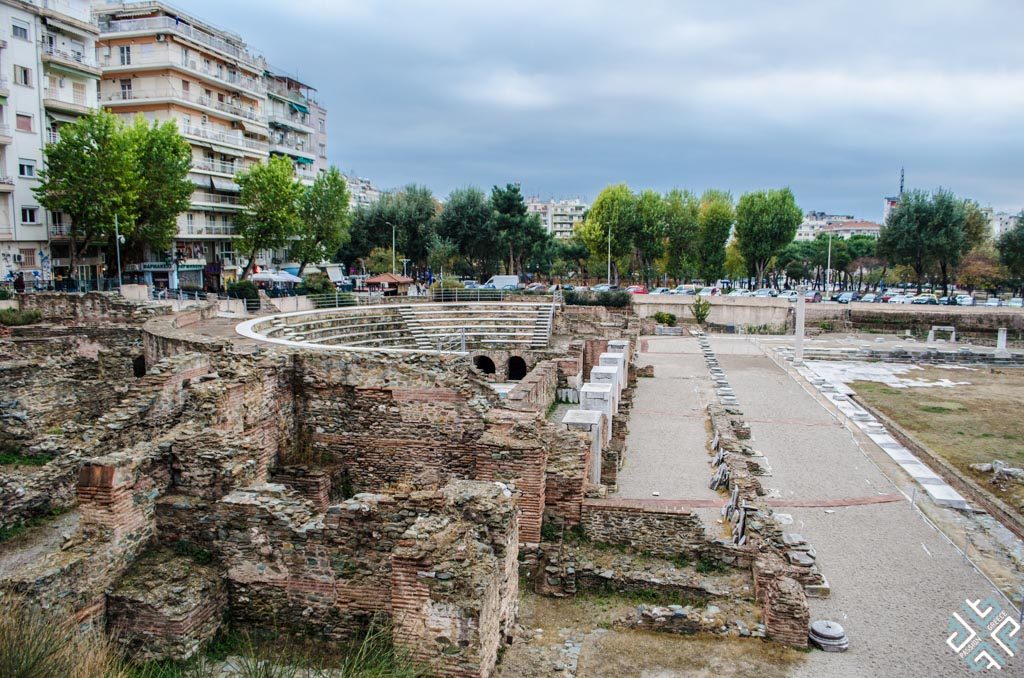
But in the 1960’s it was long forgotten. Only when digging for the foundations for a large courthouse- the intended extension northward of Arsirotole plaza- was this forum re-discovered. There is a museum underground, but you can see the ruins well from the outside- including an Odeon and an Arcade.
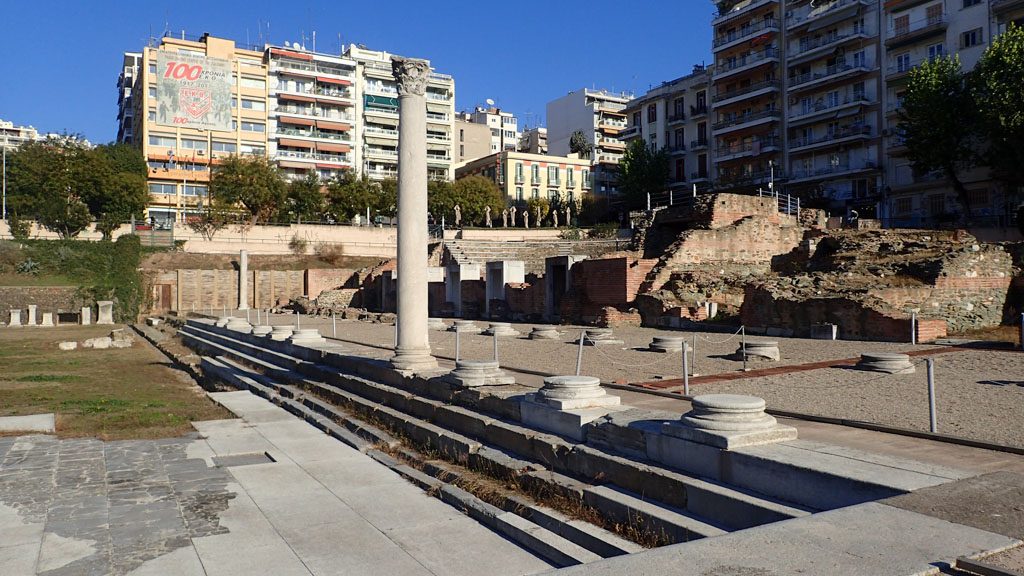
Fillipou and Agnostou Stratiotou
Tuesdays- Sundays 9:00 – 16:00 (summer oftento 20:00)
Downtown Elegance
Aristotle Square
When much of Thessaloniki burned in a fire in 1917, the city was restructured- roads widened and straightened and open spaces established, with the aim of looking more like a grand European capital than a cramped medieval town.
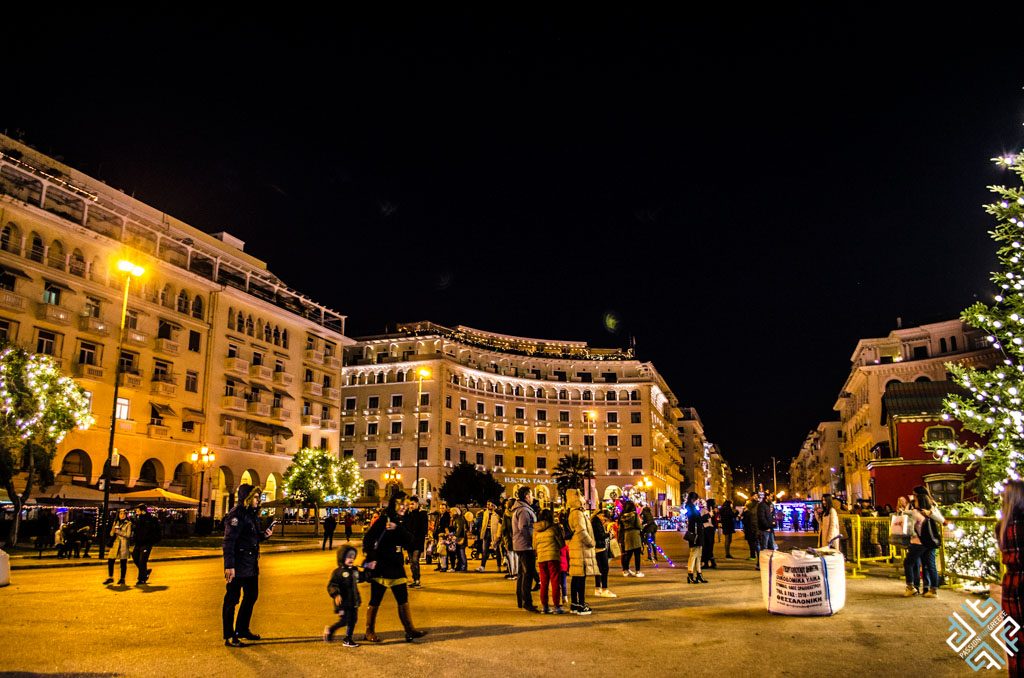
Aristiotle square was the only part of the design of the urban planner and architect Ernst Hebrard that was actually fully realized, due to funds, and also to the discovery of the Roman Agora (see above). This beautiful plaza with curved facades embraces the sea. The Byzantine character of the city is reflected in the colors- the beautiful red colonnades and the creamy buildings, and in the Byzantine motifs decorating the buildings. The Olympion theatre franes the square in one side, and the glorious Elektra Palace hotel frames it on the other. On the rooftop, there is a café with an unparalleled view of the square and the bay, with both indoor and outdoor seating. Come for a coffee or a glass of wine, or a light meal.
Horizontes, Electra Palace Hotel
Plateia Aristotelous 9, daily 6:30 am – 1:30 am (closes at midnight on Sundays)
Ouzerie in the Ladadika
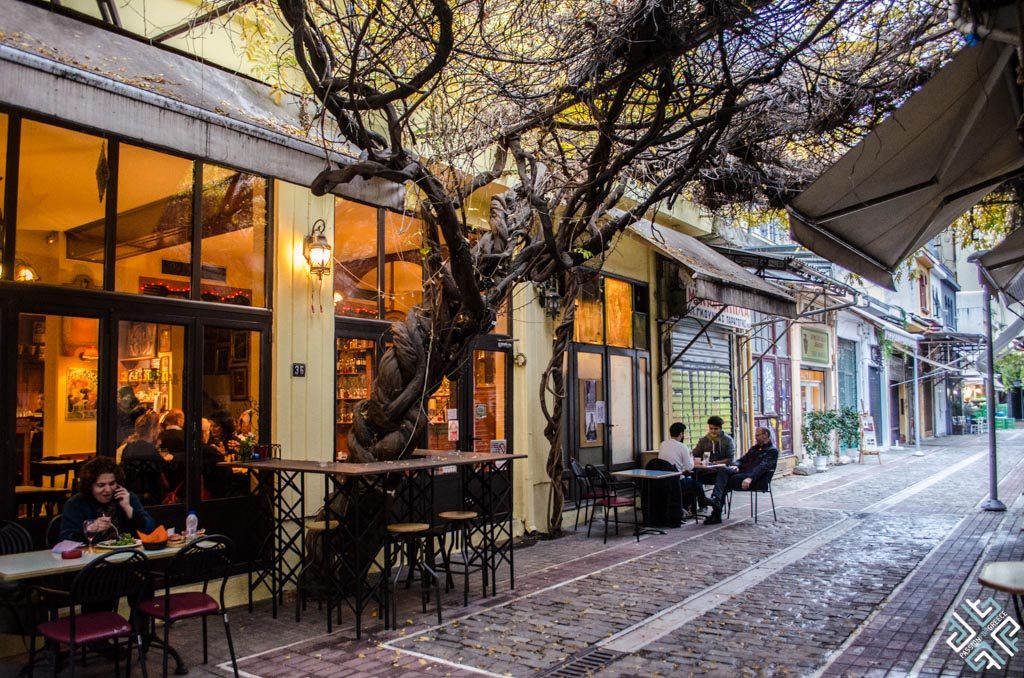
The Ladadika- the name means “oil warehouses”- is a neighborhood of winding cobblestone alleys and small charming buildings right along the harbor. It used to be just storage, but now for the last two decades or so this has been a very popular destination for bars and restaurants. At Full tou Meze (“Meze” is a small savory dish, perfect for snacking with ouzo or wine), Greek products decorate the white airy interior.
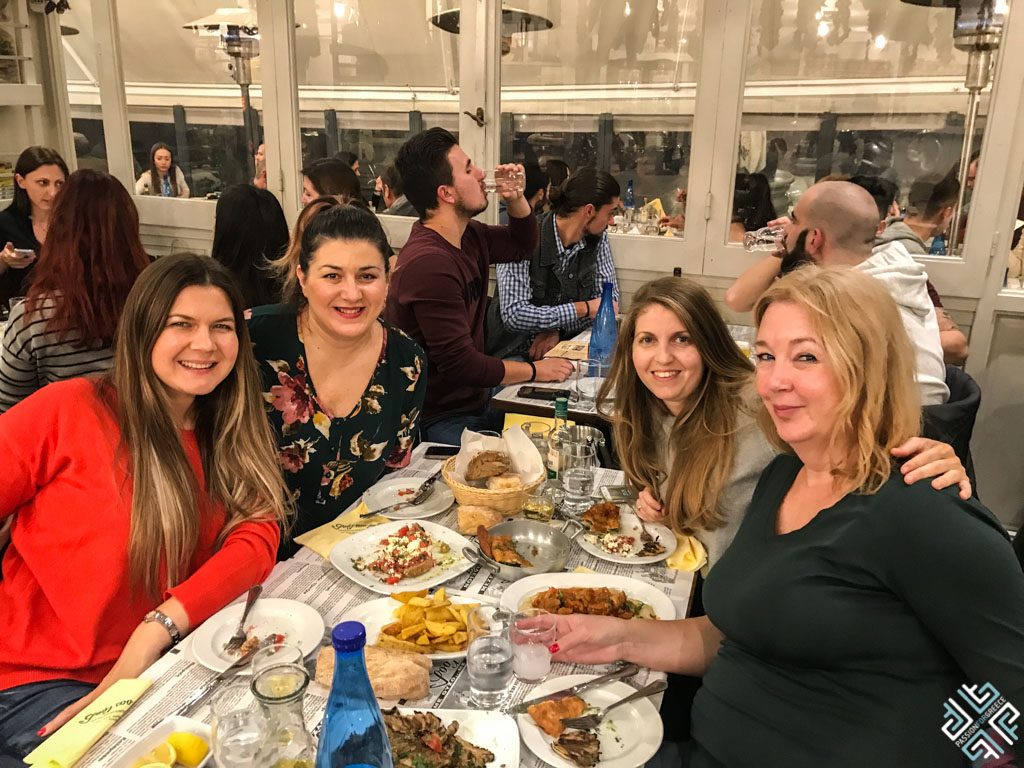
A huge menu of delicious plates will keep you a the table for a long time- glasses clinking and good cheer flowing, Thessaloniki style.
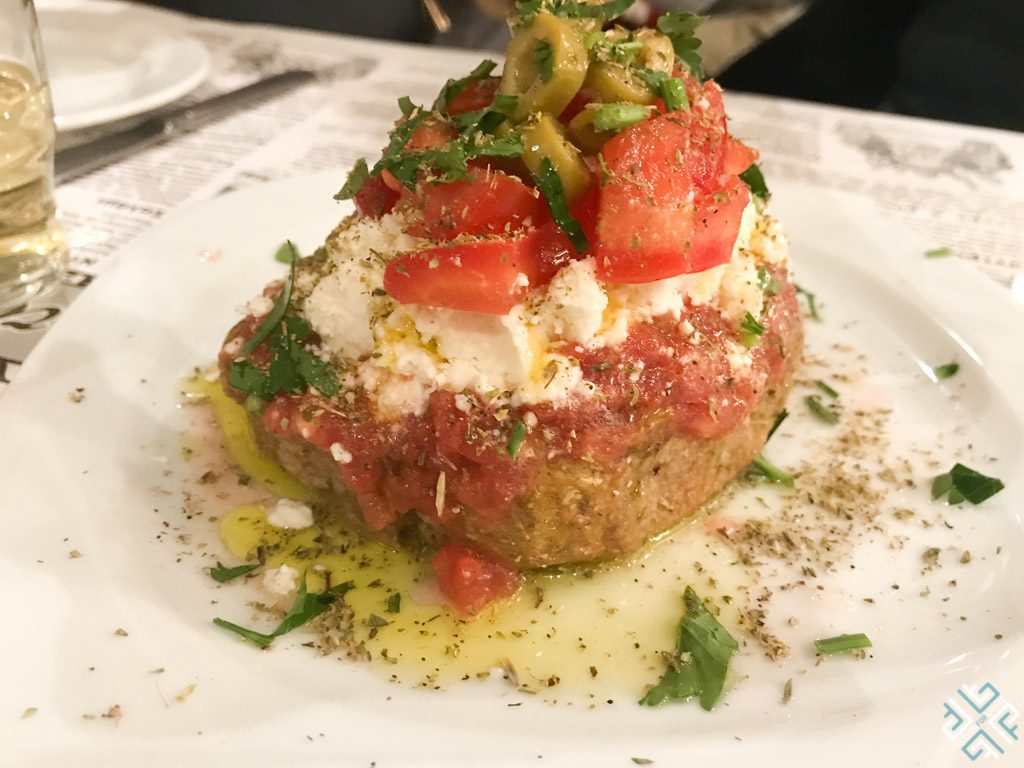
Full tou Meze, Katouni 3 (on the Plateia)
Daily 11:00 am – 2:00 am
Tiganies kai Sxares (the name means “pans and grills”), right on the main square, has a large menu offers the full span of inventive Greek meze – small plates made for sharing with wine, beer, or tsipouro. There are meat dishes, salads, spreads, croquettes, cheese dishes, and plenty of saucy, spicy delights. The bright and cheerful decor recalls an old-fashioned grocery. Across the square is the somewhat more refined Zythos. The name is from the Greek word for beer – there is an excellent selection, plus wines, and many refined and inventive dishes. The romantic interior has an old tile floor, lovely lighting, and antiques.
A Classic Thessaloniki Lunch
One of Thessaloniki’s best meals is also one of the most appealingly casual. At plastic tables outdoors, great portions of tender salt cod, deep fried in crisp, airy batter, are served on sheets of paper.
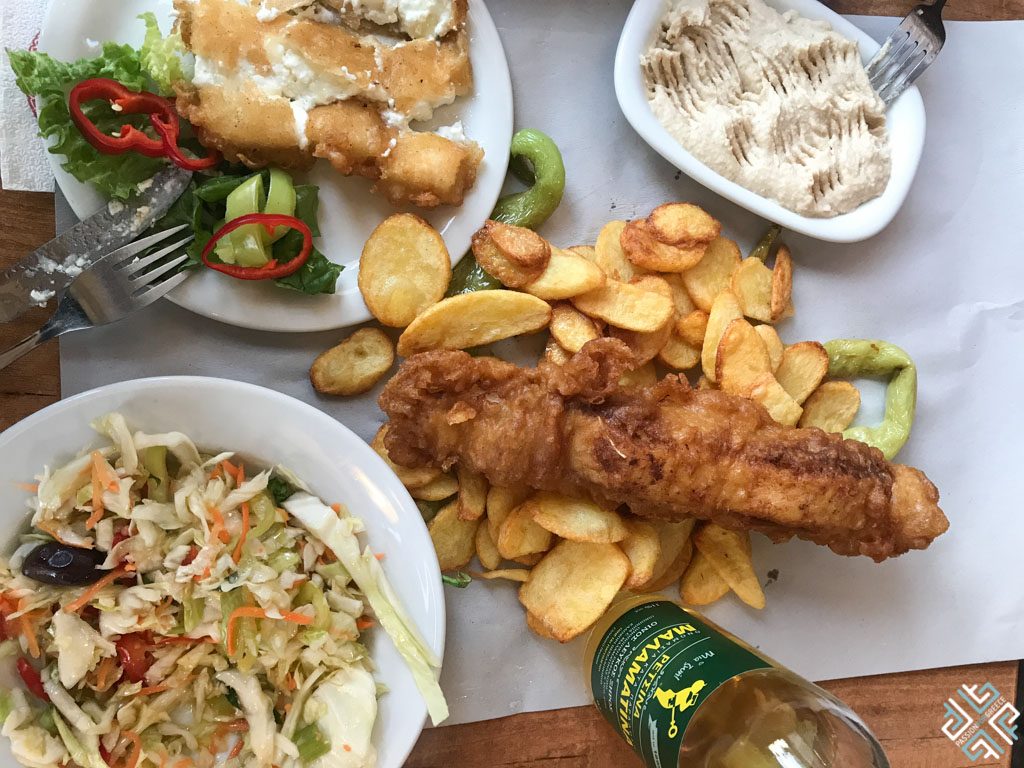
Alongside are fresh fried potatoes, ‘skordalia’- this is a spread of stale bread blended with vinegar, oil, and so much garlic that you don’t even want to think about having a social engagement for a day or two- and a fried super-hot long green pepper. The combination is addictive. What in the world can you drink with such powerful flavors? Icy cold retsina is the traditional choice, and a perfect match. Enjoy this bold taste of Thessaloniki- a favorite among dock workers ad well-heeled matrons alike.
Bakaliarakia sto Limani, and Balakliarakia tou Aristou- nearly identical menus and prices- are right next to each other, on the end of Katouni, right across from the entrance to the harbor. Daily, late morning to around 19:00.
Elegant Flavors
For a complete, expertly curated dining experience, venture out to the elegant seaside neighborhood of Aretsou. At the Aficionados housed in a luxuriously appointed three-story Art Deco mansion, you’ll have refined creative cuisine from star chef Dimitris Pamporis on the elegant ground floor. The first floor is a first-rate wine bar for oenophiles who want to experience the best and most interesting in Greek and international wines. The top floor is a classy cocktail and Champagne bar plus restaurant.
Bar scene
Oenophiles will love Vin, a gorgeous wine bar with a large list, just steps from the square on Katouni. One of the loveliest and most elegant rooms in town, also on Katouni, is Manoir – a splendid and sophisticated place for dinner, cocktails, or wine. If you feel like a dance along with your cocktail, try the Tango Bar, where you can often find a Milonga in progress.
Pin for later…
